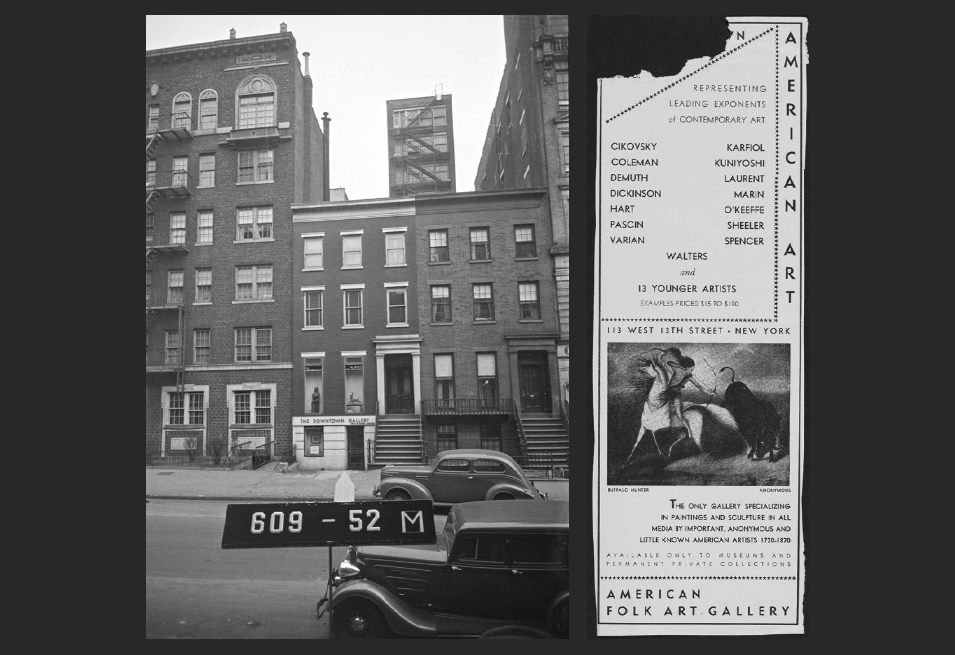The Gallery Queen of American Art: Edith Halpert
The first commercial art gallery in Greenwich Village was owned by noted gallerist Edith Halpert, and was located at 113 West 13th Street. The first woman to open a commercial art gallery, she acquired the space with her friend, Berthe Goldsmith, in 1926 when she determined her own skills in art insufficient for success. Halpert evolved into a master of sales, introducing her own aesthetics, culture, and ideas into the purchasing and display of art.

Fostering personal relationships with buyers, she fine-tuned the process of selling and collecting art. Unlike other gallerists of the time, Halpert introduced an evolutionary approach to collecting. This technique consisted of selling and displaying the less expensive prints and early works of new artists to beginner collectors — a system that would later create the familiar artist-patron relationships we see in modern-day collecting.
Edith was also known for collaborating with other women in the early American art scene. One woman in particular, Abby Aldrich Rockefeller, was a notable collaborator of Halpert’s. First visiting the gallery in 1928, Abby would later help to establish the renowned American Folk Art collection from 1929-1931, a series that was prominently featured on the second floor of 113 West 13th Street. Eventually, the collection made its way to Colonial Williamsburg, where it can still be viewed today.
This close relationship between Abby Rockefeller and Edith Halpert is also reflected in the present-day collection of the MoMA today. Opening on November 7, 1929, MoMA would inherit the bulk of Abby’s collection, consisting of over 500 artworks recommended by Edith Halpert.

Halpert’s art marketing also came into play when she began collaborations with another collector, Electra Havemeyer Webb. Webb became a frequent visitor and customer of Edith’s Downtown Gallery. The two would continue collaborating, acquiring a huge collection of American sculpture and art in the early 20th century. The two continued a close friendship and business partnership for many years. Electra Havemeyer Webb would later found the Shelburne (Vermont) Museum in 1947, featuring an impressively large and broad collection of American sculptures, with Edith serving on the board of trustees.

Halpert began representing renowned female artist Georgia O’Keeffe in 1946 following the death of her dealer and partner, Alfred Stieglitz. The Downtown Gallery would display “Poppies,” one of O’Keeffe’s well-known floral pieces in 1950, as well as earlier works like “Snowstorm” from 1935. Halpert was known for focusing on the work of women, immigrants, and African-Americans throughout her career as a gallerist. Eventually, she gained a reputation for her masterful sales and progressive marketing of American art.
The Downtown Gallery would flourish at 113 West 13th Street for 14 years before Halpert eventually moved it uptown.
Sources
“Edith Halpert and the Rise of American Art”
“A Forgotten Pioneer’s Art World Is Resurrected at the Jewish Museum”
